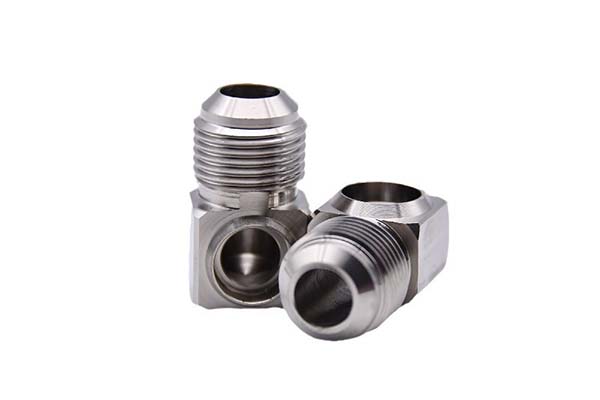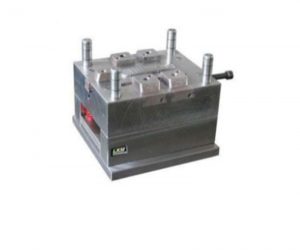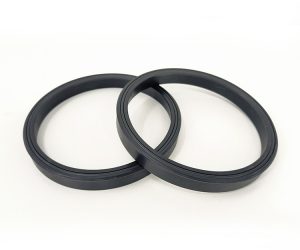1. Understanding Rapid Manufacturing
1.1 What Exactly is Rapid Manufacturing?
Rapid manufacturing, in simple terms, is a revolutionary approach to production that has been transforming industries across the globe. It refers to advanced production techniques that leverage digital design, additive manufacturing (3D printing), CNC machining, and automated workflows to create end-use parts with unprecedented speed. Unlike traditional methods requiring expensive tooling and lengthy setup times, it enables on-demand production of complex components, reducing lead times by up to 70% according to industry data.
At its core, rapid manufacturing uses digital models as the starting point. These models are created using computer - aided design (CAD) software. Once the design is finalized, the data is sent directly to manufacturing equipment, such as 3D printers or CNC machines. For example, a 3D printer builds parts layer by layer, adding material precisely where it's needed. In contrast, CNC machining removes material from a solid block to create the desired shape.
Let's take a look at a comparison table to better understand the difference between traditional manufacturing and rapid manufacturing:
| Comparison Items | Traditional Manufacturing | Rapid Manufacturing |
| Lead Time | Long, often weeks or months for tooling and production setup | Short, can be as fast as a few hours to a few days depending on complexity |
| Tooling Costs | High. Expensive molds, dies, and fixtures are required | Low. Digital models replace the need for most physical tooling |
| Design Flexibility | Limited. Design changes often require costly re - tooling | High. Design modifications can be made easily in the digital model and quickly implemented in production |
| Production Volume Economies | Economical for high - volume production. Unit cost decreases with more units produced | Economical for both low - volume and high - volume production. Cost per unit is relatively stable regardless of volume |
| Complexity of Parts | Difficult and costly to produce highly complex parts | Well - suited for producing complex geometries with ease |
For instance, in the automotive industry, traditional manufacturing of a new prototype part might involve creating a custom mold, which could take weeks and cost thousands of dollars. With rapid manufacturing, the same part can be 3D printed in a matter of days, at a fraction of the cost, allowing for faster design iterations and innovation.
2. Advantages Over Traditional Manufacturing
2.1 Cost Efficiency Comparison
One of the most significant benefits of rapid manufacturing is its cost - effectiveness, especially when compared to traditional manufacturing methods. Let's take a detailed look at the cost - related aspects:
| Criteria | Rapid Manufacturing | Traditional Manufacturing |
| Tooling Costs | \(0 - \)5,000 | \(20,000 - \)100,000+ |
| Material Waste | 5 - 15% | 30 - 50% |
| Prototyping Time | 1 - 3 days | 4 - 8 weeks |
Tooling Costs: In traditional manufacturing, creating molds, dies, and fixtures can be extremely expensive. For example, in injection molding, which is a common traditional manufacturing process, a complex plastic mold can cost upwards of \(50,000. These high costs are due to the need for precision machining of the mold, often using high - grade steel and skilled labor. In contrast, rapid manufacturing, particularly 3D printing, significantly reduces or even eliminates tooling costs. Since parts are created directly from digital models, there's no need for physical molds. Even in cases where some form of tooling is required in rapid manufacturing, such as fixtures for CNC machining, the cost is much lower, usually ranging from \)0 to a maximum of $5,000 for simple jigs and fixtures.
Material Waste: Traditional manufacturing processes like subtractive machining often result in a large amount of material waste. For instance, in milling a complex metal part from a solid block, up to 50% of the original material can be removed as waste. This not only increases the cost of materials but also has environmental implications. Rapid manufacturing, on the other hand, is much more material - efficient. In 3D printing, materials are added layer by layer, with only 5 - 15% waste, mainly due to support structures that may be required during the printing process but can often be recycled.
Prototyping Time: The time taken to create a prototype is a crucial factor in product development. In traditional manufacturing, the prototyping process can be long and arduous. Designers first need to design the product, then create tooling, which can take weeks. After that, the actual production of the prototype begins. In total, it can take 4 - 8 weeks to get a prototype. With rapid manufacturing, the process is much faster. A 3D - printed prototype can be ready in as little as 1 - 3 days. This allows companies to quickly test and iterate on their designs, reducing the overall time to market for new products.
2.2 Speed - to - Market Acceleration
The speed of rapid manufacturing has a profound impact on a company's ability to get products to market quickly. In industries with high - speed innovation cycles, such as aerospace and automotive, this can be a game - changer.
Aerospace companies using rapid manufacturing report reducing new component development cycles from 18 months to 6 months through direct metal laser sintering. This technology allows for the creation of complex metal parts with high precision. For example, engine components that were previously manufactured through a long - series of casting, forging, and machining operations can now be directly printed. The elimination of multiple intermediate steps and the ability to produce parts on - demand significantly shortens the development timeline.
Automotive firms like GM achieved 60,000 parts production in 5 weeks for spoiler components via HP Multi Jet Fusion. In 2021, General Motors decided to add a design for a spoiler component to improve the aerodynamics and fuel efficiency of their 2022 SUV. Due to the late - stage design change, traditional manufacturing methods would have required creating new molds and setting up production lines, which could have taken 12 weeks. By using HP's Multi Jet Fusion technology, they were able to produce 60,000 parts in just 5 weeks. This not only saved time but also ensured that the vehicles could be delivered on schedule, preventing potential losses due to production delays.
5. Choosing the Right Rapid Manufacturing Partner
5.1 Evaluation Criteria
Selecting the right rapid manufacturing partner is crucial for the success of your projects. Here are some key evaluation criteria:
- Certifications: Look for partners with relevant certifications such as ISO 9001, which ensures a high - level of quality management in their operations. In the aerospace industry, the AS9100 certification is highly valued. This certification adheres to strict aerospace - specific quality standards, covering aspects like design control, configuration management, and risk management. For example, a company with AS9100 certification is more likely to meet the stringent requirements for manufacturing aerospace components, ensuring that parts are produced with the highest precision and reliability.
- Material expertise: A good partner should have in - depth knowledge of various materials, including metals, polymers, and composites. Metals like titanium e aluminum are popular in the aerospace and automotive industries due to their high strength - to - weight ratios. Polymers such as ABS, PLA, and high - performance polymers like PEEK are widely used in different applications, from consumer products to medical devices. Composites, which combine two or more materials to achieve unique properties, are also becoming increasingly important. A partner that can offer a wide range of materials and provide expert advice on material selection based on your project requirements is invaluable.
- Track record in your industry segment: A partner with a proven track record in your specific industry is more likely to understand the unique challenges and requirements. For example, if you are in the medical device industry, a rapid manufacturing partner that has experience in producing components like prosthetics or surgical instruments will be better equipped to handle your project. They will be familiar with regulatory requirements, biocompatibility standards, and the need for high - precision manufacturing in the medical field. Similarly, in the electronics industry, a partner with experience in producing small, intricate components for circuit boards will be a better fit.
5.2 Yigu Technology's Approach
With over 15 years of experience, Yigu Technology offers a comprehensive and innovative approach to rapid manufacturing:
- End - to - end digital workflow from CAD to finished part: We have developed a seamless digital workflow that starts with the initial CAD design. Our team of experienced engineers can work directly with your CAD files, making any necessary modifications or optimizations. Once the design is finalized, it is sent directly to our state - of - the - art manufacturing equipment. This integrated process reduces the risk of errors that can occur during manual data transfer and ensures that the final part accurately reflects the original design.
- Case study: Reduced a client's automotive bracket production cost by 55% using topology optimization: One of our clients in the automotive industry was looking to reduce the cost of producing a complex automotive bracket. We used topology optimization techniques to analyze the design and identify areas where material could be removed without sacrificing strength or functionality. By optimizing the design, we were able to reduce the amount of material required by 40% and simplify the manufacturing process. In total, we reduced the client's production cost by 55%, while also improving the performance of the bracket. This case study demonstrates our commitment to using innovative techniques to help our clients achieve their cost - reduction and performance - improvement goals.
7. Conclusion
Rapid manufacturing has emerged as a game - changing force in the manufacturing landscape. By leveraging digital technologies, additive manufacturing, and automated processes, it offers a host of advantages over traditional manufacturing methods. From cost savings and speed - to - market acceleration to design freedom and supply chain resilience, the benefits are clear.
As we've seen, companies across various industries are already reaping the rewards of rapid manufacturing. They are reducing costs, increasing efficiency, and driving innovation at an unprecedented pace. The future of manufacturing lies in the hands of those who are willing to embrace these new technologies and adapt to the changing landscape.
At Yigu Technology, we are committed to helping our clients navigate this new era of manufacturing. With our expertise, state - of - the - art facilities, and customer - centric approach, we are well - positioned to be your partner of choice for all your rapid manufacturing needs.


